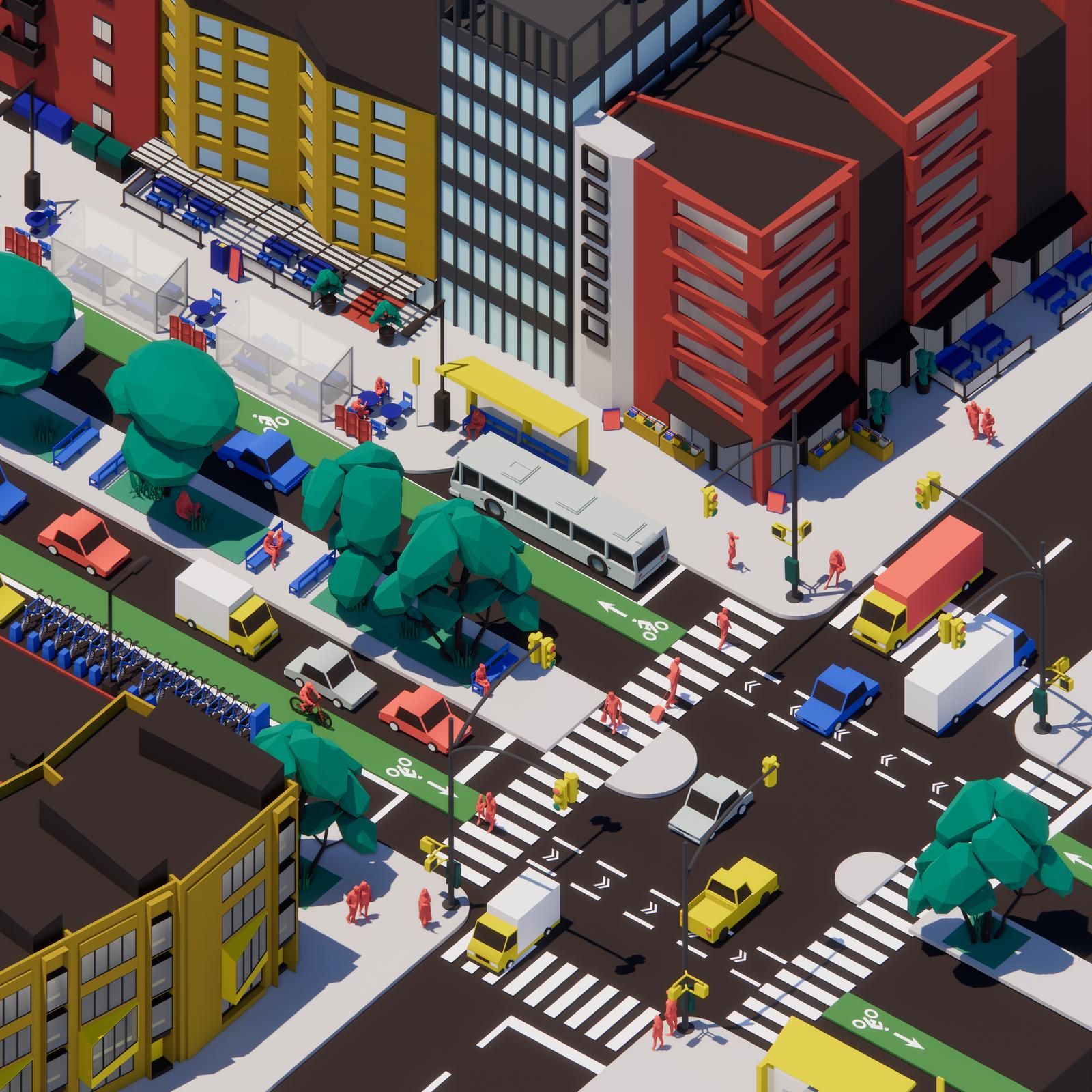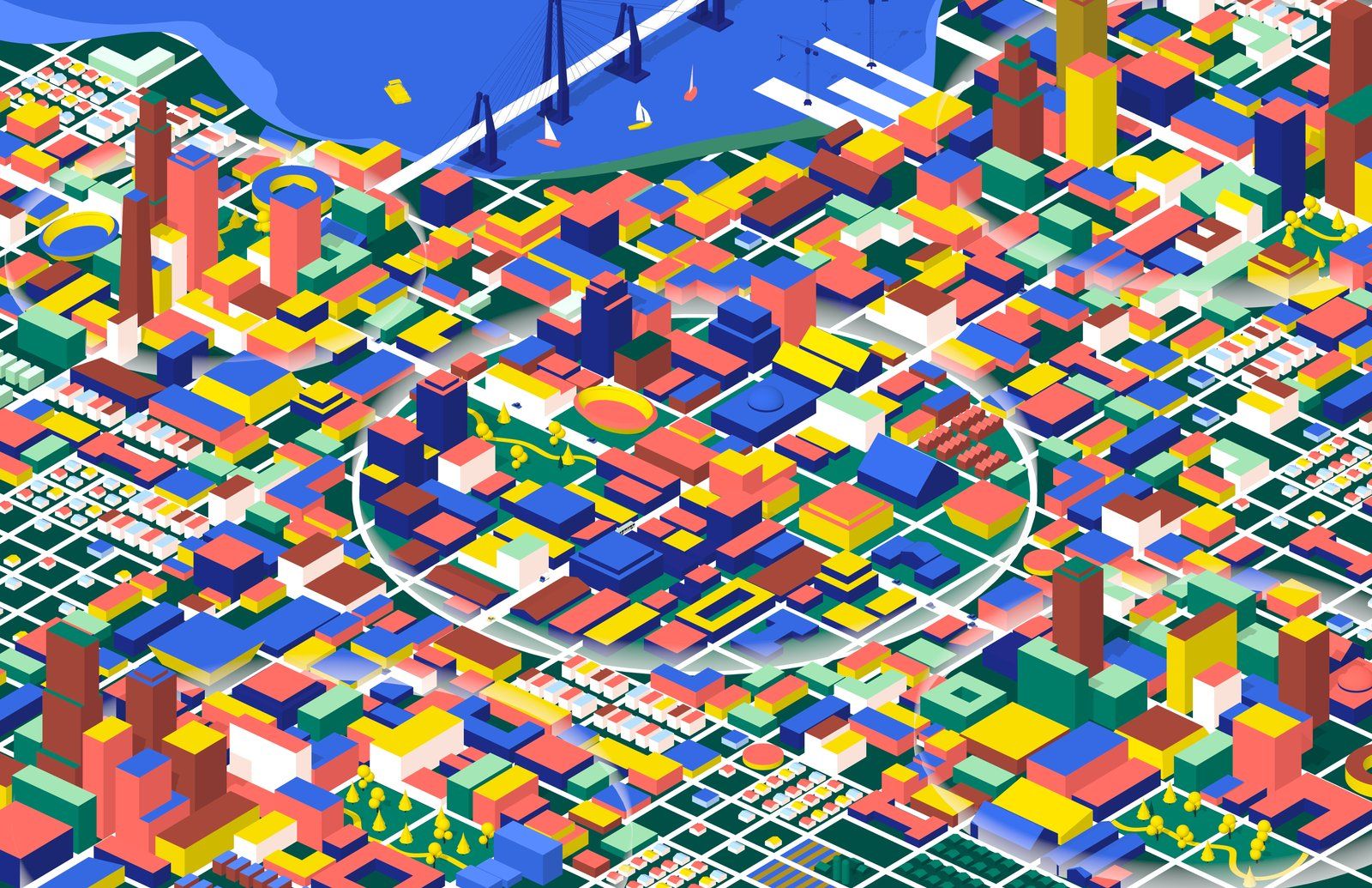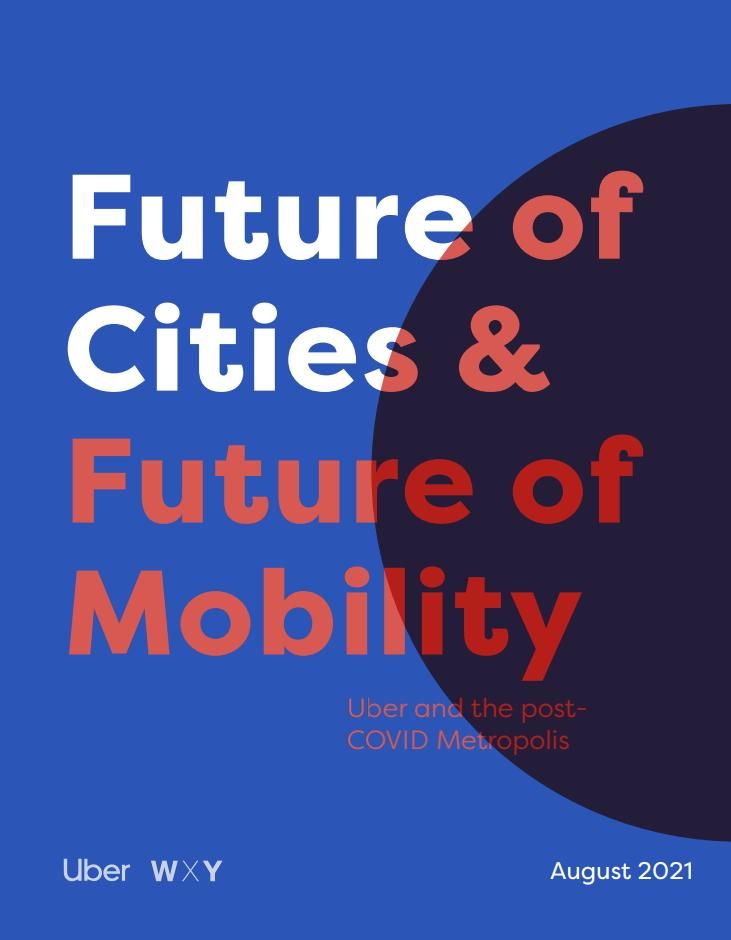
An illustration of an urban street with bike lanes, bus stops, and pedestrian-friendly design.
By applying an urban planning lens to a global dataset, WXY revealed how ride-hailing patterns can reflect and influence short- and long-term shifts in land use, mobility, and public health.
The COVID-19 pandemic fundamentally changed how we work, live, and travel. It reshaped cities and their mobility systems. We helped Uber figure out where they fit into the changing dynamics and identified roles they can play now and – in the future.
Urban mobility faced profound disruption during the COVID-19 pandemic. The shift to remote work led to changes overnight and caused sharp reductions in travel. There were also many places where essential workers relied heavily on Uber due to the initial health concerns that people associated with mass transit. Uber needed to understand how these trends would impact its core business and pinpoint options for a response.

An illustration of a city plan showing dense urban development, open spaces, and waterfront connectivity.
Our research focused on examining mobility trends across multiple urban contexts to assess how Uber’s platform could adapt to the changes brought about by the pandemic. The study used data from eight cities and explored opportunities for the company to expand its service offerings, including micromobility and carsharing, to meet evolving demands. By reflecting on past crises and trends, we outlined strategies for Uber to align its services with urban resilience, sustainability, and inclusivity.
Together with Uber’s Policy and Research team, we analyzed data spanning multiple years, contextualized urban development patterns, and considered both the challenges and the opportunities posed by the post-pandemic environment. This comprehensive effort brought together expertise in urban planning, data analysis, and mobility innovation.

Future of Cities & Future of Mobility
The study gives Uber strategies for adapting and growing in the post-pandemic urban landscape. It highlights key areas of support for cities, including enhancing mobility for underserved populations, reducing carbon emissions through micromobility, and responding to shifting land use. By aligning its services with evolving needs, Uber can position itself for the future.
Claire Weisz Architects LLP
d/b/a WXY architecture + urban design
212 219 1953
office@wxystudio.com
Careers ↗
New York
25 Park Place, 5th Floor
New York, NY 10007
Toronto
30 St. Patrick Street, 5th Floor
Toronto, ON M5T 3A3 Canada
Subscribe to our newsletter
Site designed by Clinton Van Arnam
Developed by Mario Giampieri